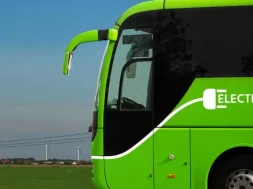
The data also showed that the Railways completed 90 per cent electrification of its BG network as of March 31
The Indian Railways fully electrified the broad-gauge (BG) network of 14 states and union territories (UTs) by the end of the financial year 2022-23 (FY23), data released by the Ministry of Railways shows. It is looking to complete electrification by December end. Chandigarh, Chhattisgarh, Delhi, Haryana, Himachal Pradesh, Jammu and Kashmir, Jharkhand, Madhya Pradesh, Meghalaya, Odisha, Puducherry, Telangana, Uttar Pradesh, Uttarakhand have been fully electrified. The network in these states and UTs aggregates to 24,383 route kilometres (rkm), which is 40 per cent of the total electrification done by the Railways.
The data also showed that the Railways completed 90 per cent electrification of its BG network as of March 31. Gauge refers to the vertical length between railway tracks, with various measurements used across the globe for train operations. While standard gauge (1,435 millimetres, or 56-and-a-half inches) is the most commonly used globally, most of India’s major train operations are undertaken on broad gauge (1676 millimetres, or 66 inches).
“The target for completion of electrification has been set for December 2023, and barring a few small stretches, we’d have completed the BG network by that time,” a senior railway ministry official told Business Standard. There are electrification works in progress on over 6,400 rkm of routes across zonal railways, and the budgetary outlay for electrification in 2023-24 was ~8,070 crore, the ministry said.
The pace of electrification between 2014 and 2019 was 7.5 rkm per day, which doubled to 15.3 rkm per day between 2020 and 2022, two years after the controversial announcement of diesel phase-out was made by then Railway Minister Piyush Goyal. In FY23, this pace rose further to 18 rkm per day, the highest the national transporter has managed in a single year.
However, the progress in the Northeast, barring Meghalaya, was in contrast to the success elsewhere, as five states were yet to have a single track electrified (see chart). While Sikkim does not have any BG lines, Assam saw progress in BG electrification, at 28 per cent — the state has a network of 2,518 rkm.
“One has to understand that rail works like electrification often require skilled labour, which is not equitably present across geographies. In Assam, there have been issues of development of contractors, shifting of several commodities important for electrification, and availability of skilled labour,” another senior official said.
“As for the rest of northeastern India, we have a sequential approach to electrification and these will be priority areas for us going forward as we approach the deadline. In many of these sections, conversion of various gauges into broad gauge had to be undertaken first. These works require more time as it is not just electrification but complete commissioning of new tracks along with electrification,” the official explained.
Many states with partial electrification also fall under the control of different zonal railways, which affects synergy in completion as each zone has a different contract and timelines for sectional electrification, the official said. States and UTs like Punjab, Goa, Rajasthan, and Karnataka have close to 80 per cent of the network electrified.











